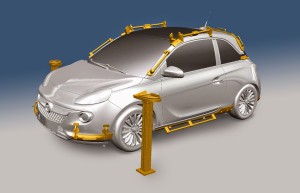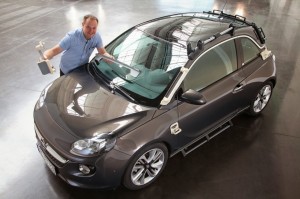For German car company Opel, 3D printed tools are not, as with many 3D printing applications, an experiment but rather an essential part of their manufacturing process. Each ADAM ROCKS car – sold by Vauxhall in the UK – requires the use of 40 custom 3D printed tools to complete each car’s assembly.


“It enables us to quickly adapt the parts. If something changes on the vehicle, we can easily modify the tool with just a few clicks,” continues Holl. “The 3D printing process enables us to produce every imaginable form and shape. Unlike conventional manufacturing technology, we don’t have to accept any limitations.”
The ADAM and ADAM ROCKS cars are only the first vehicles manufactured by Opel that will be assembled thanks to the use of 3D printed jigs and tools. Currently the Insignia and the Cascada convertible were both assembled with 3D printed tools and the Corsa, Vivaro and the Mokka assembly lines will all begin using them during the coming months.

Opel is owned by General Motors Company and their cars are sold in the US but often rebranded as Cadillacs, Buicks or Saturns. They are also exported to markets as diverse as South Africa, China, Japan, Singapore and Chile. GM is currently one of the largest car manufacturers in the world, in fact between 1931 and 2007 they sold more cars than any other automaker. While multi-national car manufacturers like GM are really more a collection of smaller previously independent carmakers, they still share technology and manufacturing processes.
Currently Opel is one of GM’s leaders in using 3D printed tools. However if they prove to be the money and time savers that they claim to be it is reasonable to assume that the practice will begin to populate throughout the entire company, and then as you would expect the entire industry.


